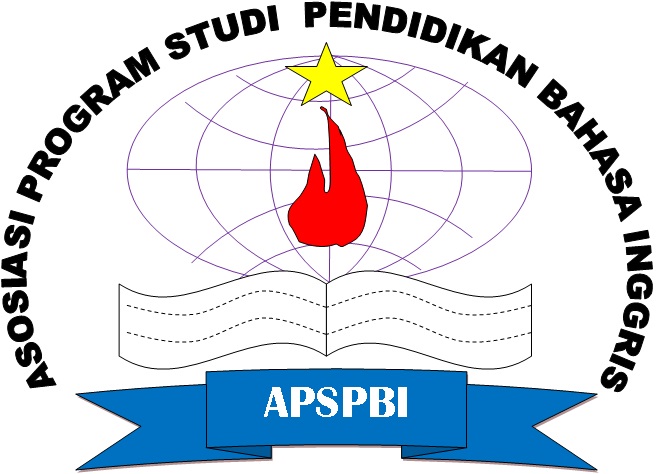Exploring teachers’ strategies in teaching writing for young learners
DOI:
https://doi.org/10.28918/erudita.v1i1.4274Keywords:
Teachers' strategy, Teaching writing, Young learnersAbstract
Teaching writing for young learners (YL) needs unique strategies from each teacher. The purpose of this study is to help teachers explore strategies for teaching writing for young learners. The survey was used with a descriptive-qualitative method which was carried out by giving an open-ended questionnaire to five English teachers and tutors from a different institution. Then, the most appropriate strategy could not be generalized because there are different conditions of students' and teachers’ qualifications. However, teachers must pay attention to three aspects of teaching such as understanding the characteristics of students, developing fun ways of learning, and peer feedback strategies. Teachers must be able to evaluate whether or not the strategy they provide can produce good results. From this research, with the exploring three different teachers' strategies in teaching writing, most of the students have succeeded in the minimum passing grade in each class. Furthermore, this paper pursued teachers to be able to design teaching writing for young learners in the right ways.
References
Adas, D., & Bakir, A. (2013). Writing difficulties and new solutions: Blended learning as an approach to improve writing abilities. International Journal of Humanities and Social Science, 3(9), 254–266. http://www.ijhssnet.com/journal/index/1819
Alkhasawneh, F. (2010). Writing for academic purposes: Problems faced by Arab postgraduate students of the college of business. EESP World, 9(2), 1–23.
Widosari, A., Suwandi, S., Slamet, & Winarni, R. (2017). DISE learning model for teaching writing to elementary school students. Sino-US English Teaching, 14(5), 279–285. https://doi.org/10.17265/1539-8072/2017.05.001
Astrini, N. W. F., Ratminingsih, N. M., & Utami, I. G. A. L.P. (2020). The model of strategies employed by English teachers in teaching writing skill in national plus schools. Journal of Education Research and Evaluation, 4(1), 59. https://doi.org/10.23887/jere.v4i1.23682
Babiarz, M., & Zapała-Kraj, M. (2019). The Importance and chosen techniques of teaching very young learners to write in English. Edukacja – Technika – Informatyka, 27(1), 48–55. https://doi.org/10.15584/eti.2019.1.6
Bakhsh, S. A. (2016). Using games as a tool in teaching vocabulary to young learners. English Language Teaching, 9(7), 120. https://doi.org/10.5539/elt.v9n7p120
Brown, H. D. (2001). Teaching by principle: An interactive approach to language pedagogy to language pedagogy. Longman, Inc.
Cahyati, S. S. (2019). An analysis of using English in classroom interaction: A study at the first grade of a primary school. PROJECT (Professional Journal of English Education), 1(1), 19-30. https://doi.org/10.22460/project.v1i1.p19-26
Cahyati, S. S., Parmawati, A., Atmawidjaja, N. S., & Siliwangi, I. (2019). Optimizing English teaching and learning process to young learners: A case study in Cimahi. Journal of Educational Experts, 2(2), 2614–3518. http://journal.kopertis-4.org/index.php/jee/article/view/57
Graddol, D. (2006). English next (vol. 62). British Council London.
Hertiki. (2018). The implementation of the writing process in teaching writing for young learners. Journal of English for Academic and Specific Purposes, 1(2), 1–15. https://doi.org/10.18860/jeasp.v1i2.5950
Jančiauskas, R. (2018). Characteristics of young learners’ psychological well-being and self-esteem in Physical Education lessons. Baltic Journal of Sport and Health Sciences, 2(85), 18–24. https://doi.org/10.33607/bjshs.v2i85.279
Ketonen, L., Hähkiöniemi, M., Nieminen, P., & Viiri, J. (2020). Pathways through peer assessment: Implementing peer assessment in a lower secondary Physics classroom. International Journal of Science and Mathematics Education, 18(8), 1465–1484. https://doi.org/10.1007/s10763-019-10030-3
Khatib, M., & Meihami, H. (2015). Languaging and writing skill: The effect of collaborative writing on EFL students’ writing performance. Advances in Language and Literary Studies, 6(1), 203–211. https://doi.org/10.7575/aiac.alls.v.6n.1p.203
Kurniaman, O., Yuliani, T., & Mansur, M. (2018). Investigating Think Talk Write (TTW) learning model to enhance primary students’ writing skill. Journal of Teaching and Learning in Elementary Education, 1(1), 52-64. https://doi.org/10.33578/jtlee.v1i1.5394
Kusumawardhani, P. (2020). The use of flashcards for teaching writing to English young learners (EYL). Scope: Journal of English Language Teaching, 4(1), 35-47. https://doi.org/10.30998/scope.v4i01.4519
Limpo, T., & Alves, R. A. (2017). Relating beliefs in writing skill malleability to write performance: The mediating role of achievement goals and self-efficacy. Journal of Writing Research, 9(2), 97–124. https://doi.org/10.17239/jowr-2017.09.02.01
Miftah, M. Z. (2015). Enhancing writing skill through the writing process approach. Journal of English as a Foreign Language, 5(1), 9–24. https://doi.org/10.23971/jefl.v5i1.88
Orlich, D. C., Harder, R. J., Callahan, R. C., Trevisan, M. S., & Brown, A. H. (2009). Teaching strategies: A guide to effective instruction. http://books.google.com/books?id=aKuEYJdGyTIC&pgis=1
Phillips, S. (1993). Young learners. Oxford University Press.
Ruusunen, V. (2011). Using movies in EFL teaching: The point of view of teachers. Phys. Rev. E., December. http://www.ainfo.inia.uy/digital/bitstream/item/7130/1/LUZARDO-BUIATRIA-2017.pdf
Sayar, F. (2019). A needs analysis for the reasons for learning Turkish as a foreign language: Sample of Djibouti. Hacettepe University Journal of Turkish Studies as a Foreign Language, 5, 95-108. https://doi.org/0000-0002-4088-8193
Scott, W. A., & Y. L. H. (1990). Teaching English to children. Longman, Inc.
Shin, J. & Crandall, J. (2019). Developing assessment practices for young learner English teachers: A professional development model in Peru. In D. Proši-Santovac & S. Rixon (Eds.), Integrating assessment into early language learning and teaching (pp. 223-235). Bristol, Blue Ridge Summit: Multilingual Matters. https://doi.org/10.21832/9781788924825-017
Downloads
Published
How to Cite
Issue
Section
License
Copyright (c) 2021 Hani Elmahida, Desi Prameli Nia, Titik Komariyah

This work is licensed under a Creative Commons Attribution-ShareAlike 4.0 International License.















